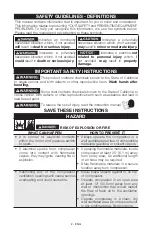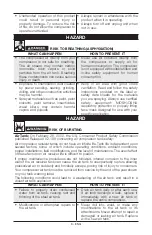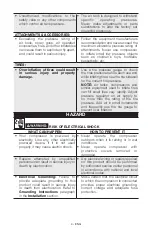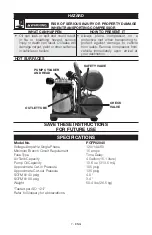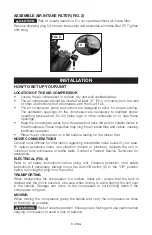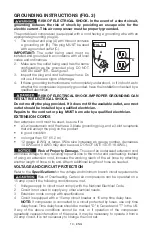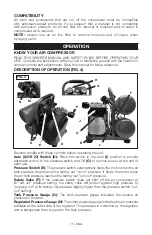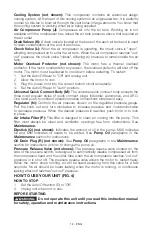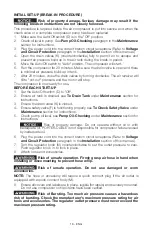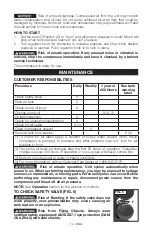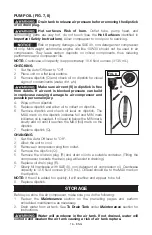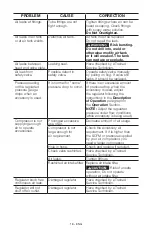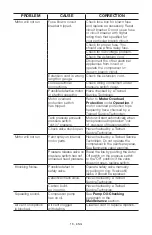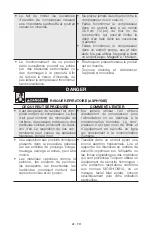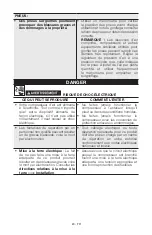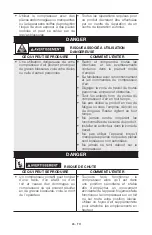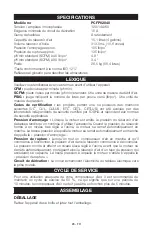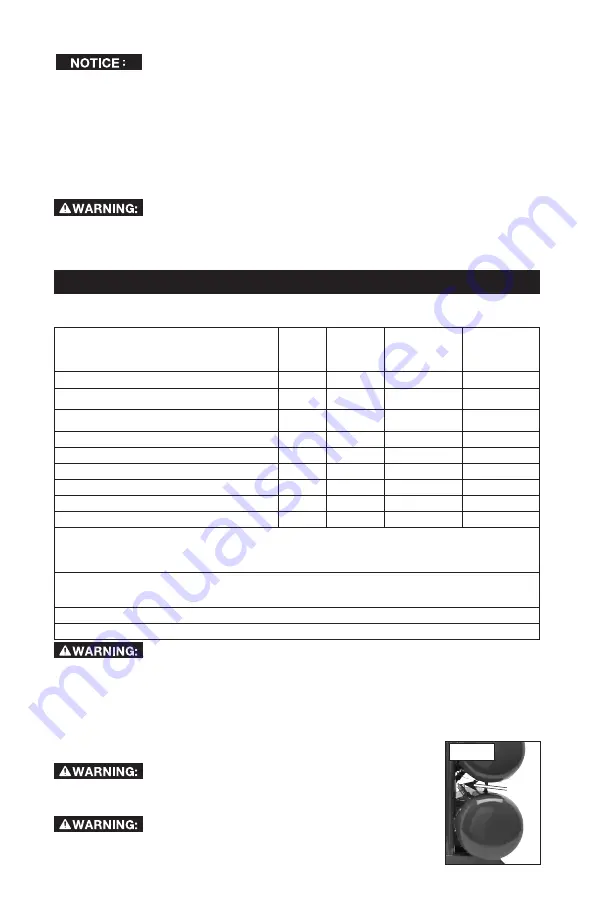
14 - ENG
Risk of property damage. Compressed air from the unit may contain
wa ter condensation and oil mist. Do not spray un fil tered air at an item that could be
damaged by moisture. Some air tools and accessories may require filtered air. Read
the in struc tions for the air tools and accessories.
HOW TO START
1. Set the Auto/Off switch (D) to "Auto" and allow tank pressure to build. Motor will
stop when tank pressure reaches "cut-out" pressure.
2. Turn regulator knob (N) clockwise to increase pressure and stop when desired
pressure is reached. Push regulator knob in to lock in place.
Risk of unsafe operation. If any unusual noise or vibration is
noticed, stop the compressor immediately and have it checked by a trained
service technician.
The compressor is ready for use.
MAINTENANCE
CUSTOMER RESPONSIBILITIES
Procedure
Daily Weekly
1 year or
200 Hours
See tank
warning
label
Check safety valve
X
Drain air tank
X
Check pump oil level
X
Change pump oil
X (2, 3)
Oil leak inspection
X
Check for unusual noise/vibration
X
Check for air leaks
X (1)
Clean compressor exterior
X
Remove tank from service
X (4)
(1) To check for air leaks apply a solution of soapy water around joints. While
compressor is pumping to pressure and after pressure cuts out, look for air
bubbles to form.
(2) The pump oil must be changed after the first 20 hours of operation. Thereafter,
change oil every 200 hours of operation or once a year, whichever comes first.
(3) Perform more frequent in dusty or humid conditions
(4) For more information, call our Customer Care Center at 1-888-848-5175
Risk of unsafe operation. Unit cycles automatically when
power is on. When performing maintenance, you may be exposed to voltage
sources, compressed air, or moving parts. Personal injuries can occur. Before
performing any maintenance or repair, disconnect power source from the
compressor and bleed off all air pressure.
NOTE:
See
Operation
section for the location of controls.
TO CHECK SAFETY VALVE (FIG. 5)
Risk of Bursting. If the safety valve does not
F
FIG. 5
work properly, over-pressurization may occur, causing air
tank rupture or an explosion.
Risk from Flying Objects. Always wear
certified safety equipment: ANSI Z87.1 eye protection (CAN/
CSA Z94.3) with side shields.


